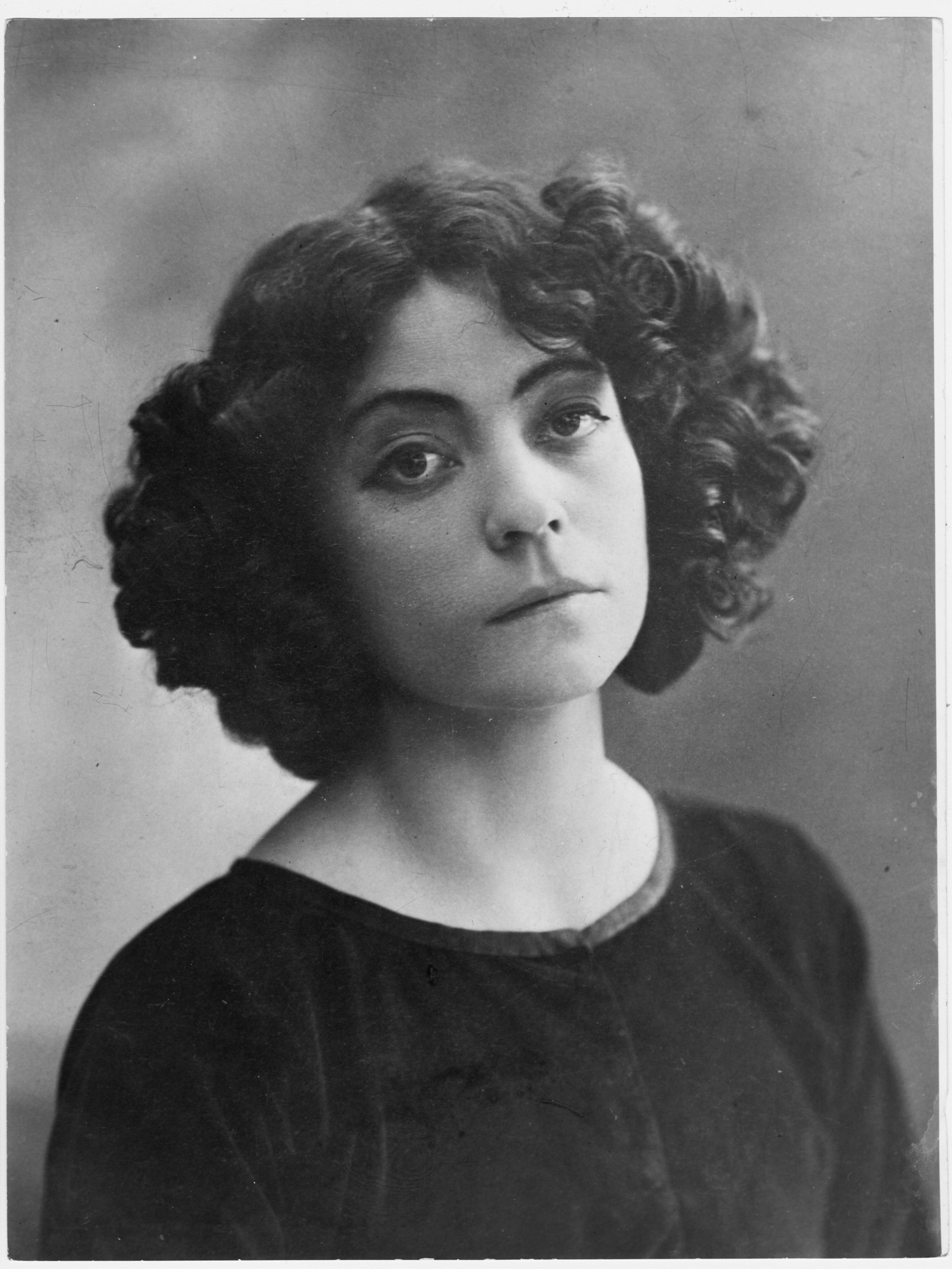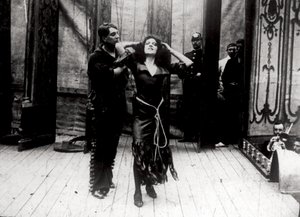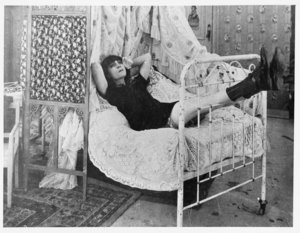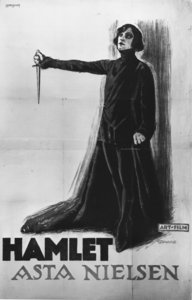Asta Nielsen (1881-1972)
The Danish theatre actress Asta Sophie Amalie Nielsen became a silent screen world star overnight after her leading role in the silent movie Afgrunden (The Abyss/The Woman always Pays) in 1910.

Asta Nielsen trained as an actress at the Danish Royal Theatre School and started work at the Dagmar Theatre in 1902. From 1905-1907 she was part of a theatre company touring Sweden and Norway, and in 1908 she moved to Det Ny Teater (‘The New Theatre’), Copenhagen. Her real breakthrough came when Peter Urban Gad convinced her to try out film acting, which was still considered a low art form in the first decades of the twentieth century. Her role in his film Afgrunden (The Abyss, 1910) depicted how the temptations of free love could shatter young women’s dreams of independence from married life. Meanwhile Nielsen’s alluringly erotic gypsy dance and her defiant glare in that role appealed to men and women alike.

Asta Nielsen opposite actor Poul Reumert in the famously erotic 'Gaucho dance' scene in Urban Gad's Afgrunden/The Abyss, 1910. Photo: The Danish Film Museum (CC BY-NC-ND 2.0)
After the success of The Abyss, Nielsen moved to Germany to pursue a career as a film actress. Soon, she was filming in UFA (Universum Film Union) in Berlin and became a celebrity in Europe under the nickname ‘Die Asta’. From 1910 to 1932, her international career blossomed, and she acted in more than 70 films in Germany, which were mainly silent, and three more films in Denmark. In addition to acting, she would often make her own costumes as well as manage lighting, which contributed to her iconic look on screen.
After the move to Germany, her talent grew, and her skilled interpretation of individual emotion and passion in the tradition of Nordic drama was appreciated both by the general public and by European avant-gardists. It has been said with respect to at least the men of the latter that they saw in her various performances “a woman able to incarnate every fantasy these avant-garde men had of girls and women”. She was a highly popular icon of resilience and comfort to soldiers from all nations during the First World War (1914-1918).
Among Nielsen's most famous film titles were Engelein (The Little Angel, 1914), Mata Hari (1920), Hamlet (1921), Hedda Gabler (1925), Die freudlose Gasse (Joyless Street, 1925), Laster der Menchheit (The Vices of Mankind, 1927), and Den farlige Alder (The Dangerous Age, 1927).

A still of Asta Nielsen in Engelein/The Little Angel, 1914. Photo: The Danish Film Museum (CC BY-NC-ND 2.0)
In his Theory of Film, Béla Belázs praised her ability to expound the young film medium and her particular ability to make use of her facial features in close-ups to create a human “microphysiognomy”. Her mimic talent was in this sense on a par with Charles Chaplin’s in timing facial and bodily expressions to the then silent moving image of film.
In 1937 she fled Nazi Germany, leaving her life’s work and film stock behind and lived almost anonymously with her daughter before her third marriage to Christian Theede.
In Denmark she was never forgiven for having had a career in Germany before the war, and her application for a license to run a cinema was declined by the state 13 times. Most of her films are lost or can only be seen in fragments today. She wrote her biography, Den tiende Muse (The Tenth Muse/ The Silent Muse) in 1945 (revised in 1966).

Poster for the gender-bending 1921 silent film adaptation of William Shakespeare's Hamlet directed by Svend Gade and Heinz Schall. In a twist on the original play, Asta Nielsen portrays the Princess of Denmark, who disguises herself as a male in order to preserve the lineage. Photo: The Danish Film Institute (Public domain)
Further reading:
- Asta Nielsen, Den tiende Muse (Gyldendal: København 1945 og 1966).
- Béla Balázs, Theory of Film: Character and Growth of a New Art. (Translated partly from Schriften zum Film 1. Der Sichtbare Mensch. Kritiken und Aufsätze 1922-26) (Dobson: London, 1952).
- Asta Nielsen, Den tiende Muse (Gyldendal: København 1945 og 1966).
- Hubert van den Berg a.o. (eds.): A Cultural History of The Avant-Garde in the Nordic Countries 1900-1925 (Rodopi: Amsterdam – New York, NY 2012), particularly:
- Bodil Marie Stavning Thomsen, ‘Die Asta and the Avant-Garde’ and
- Geert Buelens, 'The Manifold in One / and the One Manifold – Asta Nielsen as an Icon for the European Avant-Garde' (available to buy online)
- Marguerite Engberg, Asta Nielsen (Det Danske Filmmuseum: København 1966).